7-氮杂吲哚-4-甲腈, 98%,7-Azaindole-4-carbonitrile
产品编号:西域试剂-WR115463| CAS NO:344327-11-3| MDL NO:MFCD08272235| 分子式:C8H5N3| 分子量:143.15
本网站销售的所有产品仅用于工业应用或者科学研究等非医疗目的,不可用于人类或动物的临床诊断或者治疗,非药用,非食用,
| 产品名称 | 7-氮杂吲哚-4-甲腈, 98% |
|---|---|
| 英文名称 | 7-Azaindole-4-carbonitrile |
| CAS编号 | 344327-11-3 |
| 产品熔点 | 195-197ºC |
| 产品密度 | 1.3±0.1 g/cm3 |
| 精确质量 | 143.048340 |
| PSA | 52.47000 |
| LogP | 2.60 |
| 折射率 | 1.685 |
相关文档
化学品安全说明书(MSDS)
下载MSDS质检证书(COA)
相关产品
| 符号 |
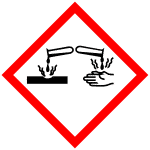
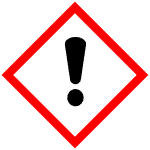
GHS05, GHS07 |
|---|---|
| 信号词 | Danger |
| 危害声明 | H302-H315-H318-H335 |
| 警示性声明 | P261-P280-P305 + P351 + P338 |
| 个人防护装备 | dust mask type N95 (US);Eyeshields;Gloves |
| 危害码 (欧洲) | Xn: Harmful; |
| 风险声明 (欧洲) | R22;R37/38;R41 |
| 安全声明 (欧洲) | S26-S39 |
| 危险品运输编码 | NONH for all modes of transport |
| 海关编码 | 2933990090 |
|
Section1. IDENTIFICATION OF THE SUBSTANCE/MIXTURE Product name: 7-Azaindole-4-carbonitrile Section2. HAZARDS IDENTIFICATION Classification of the substance or mixture According to Regulation (EC) No1272/2008 Acute toxicity, Oral (Category 4) Skin irritation (Category 2)
Serious eye damage (Category 1) Specific target organ toxicity - single exposure (Category 3) According to European Directive 67/548/EEC as amended. Harmful if swallowed. Irritating to respiratory system and skin. Risk of serious damage to eyes. Label elements Pictogram Signal wordDanger Hazard statement(s) H302Harmful if swallowed. H315Causes skin irritation. H318Causes serious eye damage. H335May cause respiratory irritation. Precautionary statement(s) P261Avoid breathing dust/fume/gas/mist/vapours/spray. P280Wear protective gloves/eye protection/face protection. P305 + P351 + P338IF IN EYES: Rinse cautiously with water for several minutes. Remove contact lenses, if present and easy to do. Continue rinsing. Hazard symbol(s) XnHarmful R-phrase(s) R22Harmful if swallowed. R37/38Irritating to respiratory system and skin. R41Risk of serious damage to eyes. S-phrase(s) S26In case of contact with eyes, rinse immediately with plenty of water and seek medical advice. S39Wear eye/face protection. Other hazards - none Section3. COMPOSITION/INFORMATION ON INGREDIENTS Synonyms: 4-Cyano-7-azaindole 1H-Pyrrolo[2,3-b]pyridine-4-carbonitrile Formula: C8H5N3 Molecular Weight: 143,15 g/mol CAS-No.EC-No.Index-No.ClassificationConcentration 4-Cyano-7-azaindole 344327-11-3--Acute Tox. 4; Skin Irrit. 2; Eye- Dam. 1; STOT SE 3; H302, H315, H318, H335 Xn, R22 - R37/38 - R41 For the full text of the H-Statements mentioned in this Section, see Section 16. Section4. FIRST AID MEASURES General advice Consult a physician. Show this safety data sheet to the doctor in attendance. If inhaled If breathed in, move person into fresh air. If not breathing give artificial respiration Consult a physician. In case of skin contact Wash off with soap and plenty of water. Consult a physician. In case of eye contact Rinse thoroughly with plenty of water for at least 15 minutes and consult a physician. If swallowed Never give anything by mouth to an unconscious person. Rinse mouth with water. Consult a physician. Section5. FIRE-FIGHTING MEASURES Suitable extinguishing media Use water spray, alcohol-resistant foam, dry chemical or carbon dioxide. Special protective equipment for fire-fighters Wear self contained breathing apparatus for fire fighting if necessary. Section6. ACCIDENTAL RELEASE MEASURES Personal precautions Use personal protective equipment. Avoid dust formation. Avoid breathing dust. Ensure adequate ventilation. Environmental precautions Do not let product enter drains. Methods and materials for containment and cleaning up Pick up and arrange disposal without creating dust. Keep in suitable, closed containers for disposal. Section7. HANDLING AND STORAGE Precautions for safe handling Avoid contact with skin and eyes. Avoid formation of dust and aerosols. Provide appropriate exhaust ventilation at places where dust is formed. Normal measures for preventive fire protection. Conditions for safe storage Store in cool place. Keep container tightly closed in a dry and well-ventilated place. Section8. EXPOSURE CONTROLS/PERSONAL PROTECTION Personal protective equipment Respiratory protection Where risk assessment shows air-purifying respirators are appropriate use a dust mask type N95 (US) or type P1 (EN 143) respirator. Use respirators and components tested and approved under appropriate government standards such as NIOSH (US) or CEN (EU). Hand protection The selected protective gloves have to satisfy the specifications of EU Directive 89/686/EEC and the standard EN 374 derived from it. Handle with gloves. Eye protection Safety glasses with side-shields conforming to EN166 Skin and body protection Choose body protection according to the amount and concentration of the dangerous substance at the work place. Hygiene measures Handle in accordance with good industrial hygiene and safety practice. Wash hands before breaks and at the end of workday. Section9. PHYSICAL AND CHEMICAL PROPERTIES Appearance Formsolid Safety data pH no data available Melting point195 °C Boiling pointno data available Flash pointno data available Ignition temperature no data available Lower explosion limit no data available Upper explosion limit no data available Water solubilityno data available Partition coefficient: log Pow: 1,908 n-octanol/water Section10. STABILITY AND REACTIVITY Chemical stability Stable under recommended storage conditions. Conditions to avoid no data available Materials to avoid Strong oxidizing agents Hazardous decomposition products Hazardous decomposition products formed under fire conditions. - Carbon oxides, nitrogen oxides (NOx), Hydrogen cyanide (hydrocyanic acid) Section11. TOXICOLOGICAL INFORMATION Acute toxicity no data available Skin corrosion/irritation no data available Serious eye damage/eye irritation no data available Respiratory or skin sensitization Prolonged or repeated exposure may cause allergic reactions in certain sensitive individuals. Germ cell mutagenicity no data available Carcinogenicity IARC: No component of this product present at levels greater than or equal to 0.1% is identified as probable, possible or confirmed human carcinogen by IARC. Reproductive toxicity no data available Specific target organ toxicity - single exposure Inhalation - May cause respiratory irritation. Specific target organ toxicity - repeated exposure no data available Aspiration hazard no data available Potential health effects InhalationMay be harmful if inhaled. Causes respiratory tract irritation. IngestionHarmful if swallowed. SkinMay be harmful if absorbed through skin. Causes skin irritation. EyesCauses serious eye irritation. Signs and Symptoms of Exposure To the best of our knowledge, the chemical, physical, and toxicological properties have not been thoroughly investigated. Additional Information RTECS: no data available Section12. ECOLOGICAL INFORMATION Toxicity no data available Persistence and degradability no data available Bioaccumulative potential no data available Mobility in soil no data available PBT and vPvB assessment no data available Other adverse effects no data available Section13. DISPOSAL CONSIDERATIONS Product Observe all federal, state, and local environmental regulations. Contact a licensed professional waste disposal service to dispose of this material. Dissolve or mix the material with a combustible solvent and burn in a chemical incinerator equipped with an afterburner and scrubber. Contaminated packaging Dispose of as unused product. Section14. TRANSPORT INFORMATION ADR/RID Not dangerous goods IMDG Not dangerous goods IATA Not dangerous goods SECTION 15 - REGULATORY INFORMATION N/A SECTION 16 - ADDITIONAL INFORMATION N/A |
| 上游产品 4 | |
|---|---|
| 下游产品 6 | |

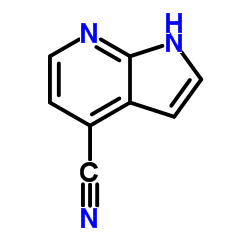

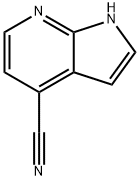

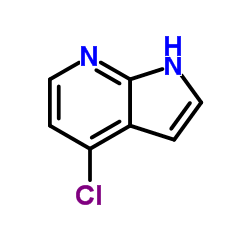
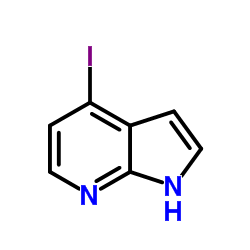
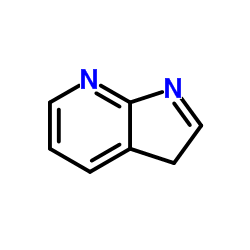
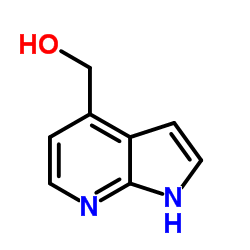
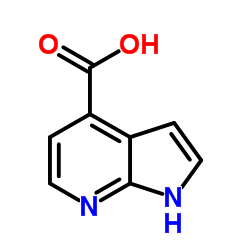
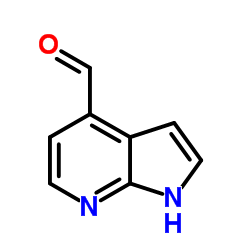
![4-(chloromethyl)-1H-pyrrolo[2,3-b]pyridine结构式](/20230522/1268390-67-5.png)
![Ethyl 1H-pyrrolo[2,3-b]pyridine-4-carboxylate结构式](/20230522/1261588-72-0.png)
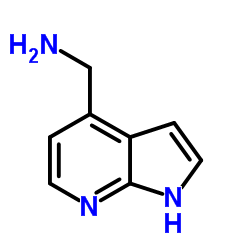





 浙公网安备 33010802013016号
浙公网安备 33010802013016号